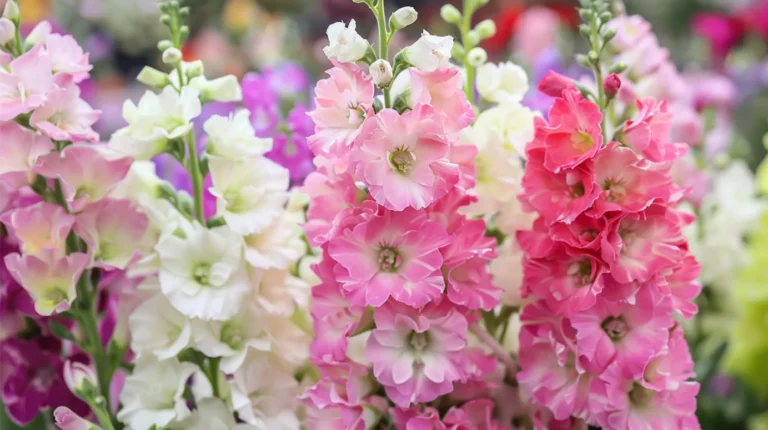A Comprehensive Guide to Planting and Growing Winter Savory

Are you a fan of herbs and all the benefits they offer? Winter savory is a fantastic addition to your garden that you may be missing out on. This perennial evergreen, also known as Satureja montana, offers a longer season than its cousin summer savory, making it a versatile option for your garden.
Let’s explore the world of winter savory, from its cultivation and history to how to grow it successfully in your garden. Discover the different cultivars available, how to manage pests and diseases, companion planting, harvesting and storage tips, along with the best uses of this flavorful herb in your kitchen.
What is Winter Savory?
Winter savory is a low-growing, semi-woody herb in the mint family that is native to the temperate climates of the Mediterranean basin. With glossy leaves and dainty flowers in shades of mauve, pink, and white, this herb offers fragrant and intense flavors that have been enjoyed for centuries.
Cultivation and History
Winter savory has a deep, earthy flavor that has been used for seasoning and healing purposes throughout history. Introduced to Europe by the Romans, this herb was a favorite in medieval walled gardens and was recommended for its fragrance by French and English garden designers. Winter savory made its way to the US in the 1800s, brought over by European colonists.
How to Grow Winter Savory
Winter savory thrives in full sun and well-draining, moderately fertile soil with a neutral pH. Enrich your planting soil with organic matter and sand to improve drainage. Plant the herb in a location where it can remain undisturbed, and follow these steps for successful growth:
- Choose a site with full sun exposure
- Enrich the soil with organic matter and sand
- Set plants in place in well-prepared planting holes
- Water regularly until established
- Apply organic matter as a top dressing in spring
- Trim the plants in early spring for new growth stimulation
- Provide winter insulation in colder regions
Indoor Cultivation
For indoor cultivation, provide a pot with proper drainage and place the plant in a sunny window. Water lightly and ensure adequate air circulation for healthy growth.
Cultivars to Select
While winter savory may not be commonly found in grocery stores, you can purchase seedlings or seeds online. Look for available plants and seeds from reputable sources to start your own winter savory garden.
Managing Pests and Disease
Winter savory is easy to care for and has minimal disease problems. Pests such as leafhoppers, spittlebugs, and spider mites may appear but are generally not a significant concern.
Companion Planting
Winter savory is a natural attractant for pollinators and can be planted near beehives for flavorful honey. It also repels cabbage moths and bean weevils, making it an excellent companion for cruciferous vegetables and beans.
Harvest and Storage
Harvest fresh sprigs in the morning for the best flavor. Store fresh sprigs in water or in the refrigerator for short-term use. Drying is an option for long-term storage, and crushed fresh leaves retain the best flavor for cooking purposes.
Best Garden Uses
Winter savory is a versatile herb that can be grown in containers, herb gardens, rockeries, and borders. It is a great companion plant for pest control in vegetable and flower beds.
Recipes and Cooking Ideas
Winter savory adds flavor to a variety of dishes, from meats and soups to breads and salads. Use it fresh or dried to enhance the taste of your favorite recipes.
Quick Reference Growing Guide
Here’s a quick reference guide for growing winter savory in your garden:
- Plant Type: Semi-woody herb, perennial
- Native to: Mediterranean Basin and southwest Asia
- Hardiness (USDA Zone): 6-9
- Exposure: Full sun
- Soil Type: Average to lean fertility
- Height: 12-15 inches
- Spread: 12-24 inches
- Companion Planting: Beans, cabbage, onions, roses
- Attracts: Honey bees
- Family: Lamiaceae
- Genus: Satureja
- Species: montana
Some Like It Hot
With its spicy, earthy flavor, winter savory is a delightful herb to grow in your garden. Whether you use it for cooking, pest control, or simply enjoy its fragrance, this versatile herb is a must-have for any herb garden enthusiast.
Do you have any favorite ways to use winter savory in your kitchen? Share your tips in the comments below!
If you enjoyed learning about winter savory, check out these other herbal primers that might pique your interest:
- How to Grow Bee Balm: Bring Out the Hummingbirds
- How to Grow Horehound
- How to Grow and Use Lemon Balm
- Grow Faassen’s Catmint for Durable Summer Color
Remember, a little winter savory in your garden can spice up your culinary creations and beautify your outdoor space at the same time. Experiment with this flavorful herb and enjoy the rewards it brings to your gardening and cooking endeavors.





